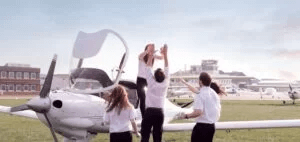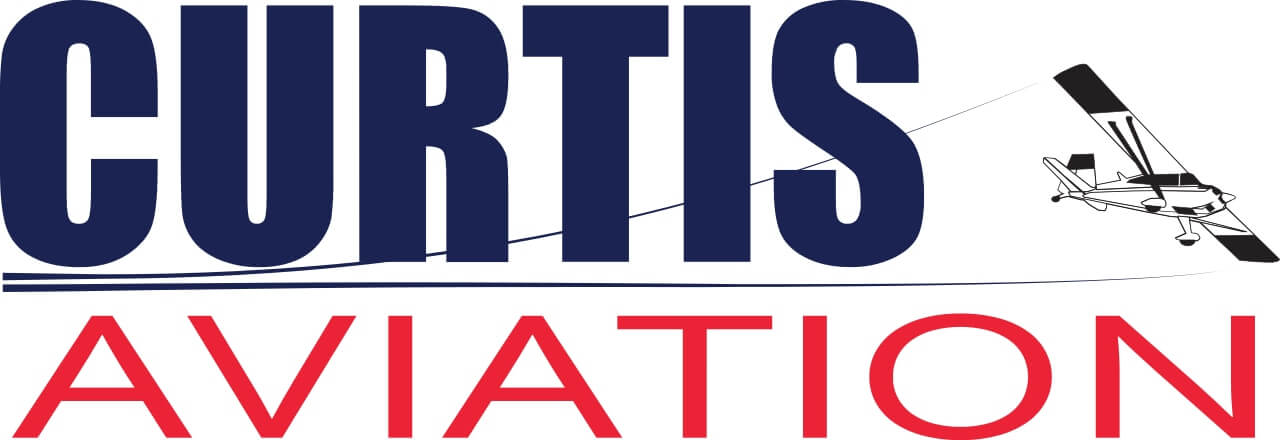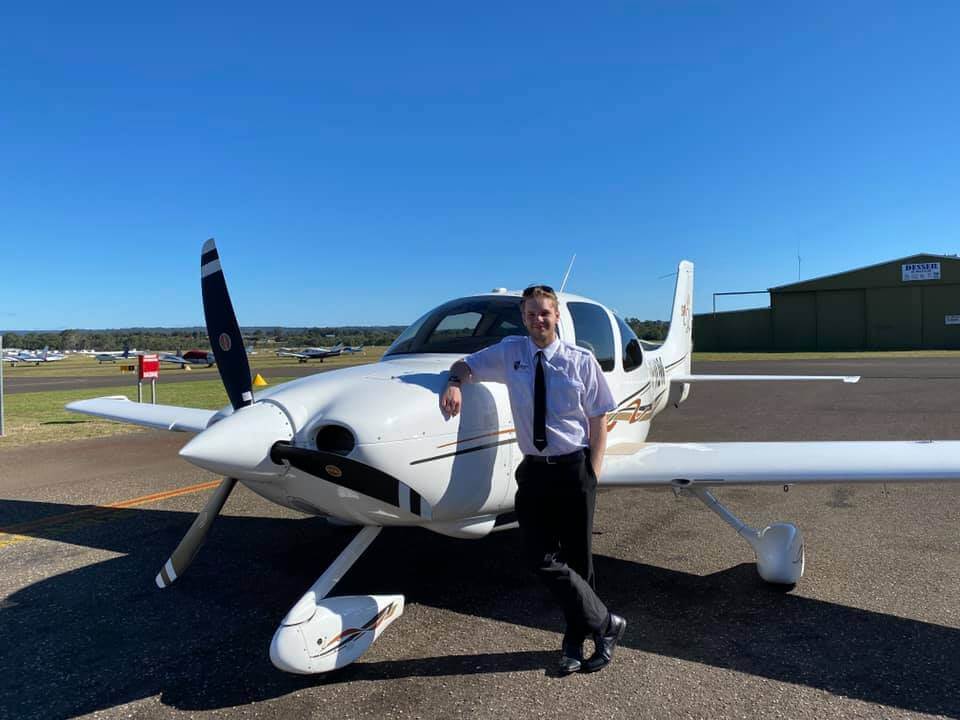If you’re like many who have dreamed of a career as a professional pilot, you may be mistaken in thinking that it is beyond the realms of possibility for you. Well, we’re here to help bust some myths and misconceptions for you. People from all walks of life have carved out exciting and satisfying careers as professional pilots and if you’re open to exploring ALL the flying career options, you may just find it more attainable and suitable to your lifestyle than you envisaged.
Today we’re stepping you through what you need to do to be a career pilot in Australia (flying aeroplanes) and introduce you to a myriad of career flying possibilities you may have never considered.
First things first!
What is a professional pilot? What is the difference between a commercial pilot and an airline pilot?
A professional pilot is anyone who gets paid for flying. And contrary to popular belief, it’s not all glamour. But just about any career pilot will tell you that, although it can be at times an unpredictable and challenging career (with ups and downs!), being a pilot for many becomes part of their DNA.
As the saying goes…. if you love what you do, you’ll never work a day in your life. That is the case for many professional pilots.
In order to work as a professional pilot, you need a Commercial Pilot Licence (CPL) with the appropriate level of experience, ratings and endorsements for the type of flying you’re doing and type of aircraft you’re flying. There are several different pathways to attain a commercial pilot licence, including those offered at Curtis Aviation.
As a commercial pilot, you can be in command of an aircraft in both private and commercial operations, except air transport/multi-crew operations like airlines. As a commercial pilot you can however co-pilot in any operation.
In the case of multi-crew operations an Air Transport Pilot Licence (ATPL) is required. (Attaining this licence is not easy, but don’t be alarmed. If you’re hoping to be an airline pilot trainee, you’re not expected to have this licence. Airlines all have different requirements and take on trainees at different points of pilot/aviation degree training. More about this another time.)
Flying for the Australian Defence Force (ADF) is different again, however we often see ex-military pilots transition across to work in the civil aviation field.
Specific details about the various pilot licences can be found on the Civil Aviation Safety Authority (CASA) website. Refer to aviation industry employer websites for their requirements and recruitment processes.
Types of Commercial Pilot careers
The possibilities for a commercial pilot are endless. Options include adventure and executive charters (such as those in our stunning King Air C90GTi), or flying to remote locations and using dirt or grass landing strips for agriculture and mining industries.
Commercial pilots may also fly to help with medical emergencies (like the Royal Flying Doctor Service), carry out deliveries, transport people and provide tourist flights (unscheduled), be involved in surveillance and search and rescue missions, firefighting and aerobatic demonstrations and joy flights, to name but a few.
A quick look online will show you the immense variety of flying roles available, and the type of companies and organisations needing professional pilots.
Many commercial pilots will continue their training to become professional flying instructors where there is no end of variety, challenge, and satisfaction (…and, dare we say it, real flying and fun!). As both a flying school and charter operator, you’ll often find Curtis Aviation flying instructors (who are also commercial pilots) teaching one day, and off on a charter the next, including our around Australia flying expeditions for students. In fact, we are often on the lookout for professional instructors to join our team or those ready to undertake an instructor rating (instructor training).
Once qualified as a commercial pilot, you may need to take on flying roles as your first steps to building up the experience and flying hours needed to further your career. These can often set you on a new, surprising and rewarding trajectory you could of never imagined. (It happens more than you may realise!)
Many commercial pilots go on to successfully start their own aviation business.
How to train as a commercial pilot
At Curtis Aviation, for instance, we have THREE commercial pilot training pathways:
- Commercial Pilot Licence Non-Integrated Course (200 hour)
This is the perfect option if you are looking for flexible training where you fly when it suits you. - Commercial Pilot Licence Integrated Course (150 hour)
If you’d like to fast-track training and save on flying hours, this is for you. - Aviation Degree
If you are wanting to take a university path, we partner with CQUniversity so you can complete your studies online and do your flying training locally with us at Camden Airport, Sydney.
Before you undertake any commercial pilot training, it’s important you chat with a reputable flying school before you go too far down the track so you’re clear about what you’re in for, and other important considerations. These include budget, is the chosen pathway suitable for your employment ambitions, and making sure you meet the medical requirements for the highest level of licence you’re aiming for. This is especially CRITICAL if you have your sights on joining an airline.
You may also need to factor in additional ratings and aircraft endorsements you’re going to need to increase your employment options, such as instrument ratings and twin-engine aircraft endorsements. Think of it a bit like training to be a doctor. Once initially qualified you move onto specialist training. Curtis Aviation is a ‘one school, many skills’ trainer where you can do your commercial pilot training plus attain other qualifications.
Some employers do want their commercial pilots to have an aviation degree, such as the CQUniversity program we partner with.
For those not in a position to take on the full commitment of commercial pilot training straight away, they may start with private pilot training and progress from there when the time is right.
Regardless of which professional pilot path you choose, we cannot stress enough the importance of carefully looking at employer websites (especially the airlines) for recruitment requirements, processes and your prospects, and chatting with industry experts, like the commercial pilot instructors at Curtis Aviation.
Our on-demand information webinar, Getting a Commercial Pilot Licence and Exploring a Career as a Pilot, will also help.
>> WATCH IT NOW.
What does a commercial pilot do?
As a commercial pilot, there’s never a dull moment and you exercise a wide range of skills and take on many responsibilities. These include:
Make flight plans and establish flight times
- Review and analyse weather, and assess other possible influences on air travel
- Plan your flight in conjunction with air traffic control
- Make sure that the aircraft’s equipment, such as the engines, fuel levels, and hydraulics are operating correctly prior to take-off
- Check all systems on the aircraft during flight
- Communicate with passengers prior to take-off and landing, ensure their safety and comfort, and keep them informed of changes in flight status and conditions
- Follow safety rules and operating procedures, including applicable laws and aviation regulations
- Maintain accurate records of flights (such as passenger information), trip documents and engine maintenance
- Report any incidents through proper channels
- Maintain professional qualifications (renewals, endorsements and checks), and ongoing learning
- And sometimes have to roll up your sleeves (such as when needing to load luggage).
What skills does a commercial pilot need to have?
As a commercial pilot, you need to have a deep understanding of aircraft operations and equipment (including aerodynamics), have the ability to problem solve and do mathematical calculations quickly. You also need excellent English language skills (reading, writing, speaking and comprehension).
Soft skills are also important, such as
The ability to remain calm and composed when dealing with high-pressure situations
- Be effective at decision-making, particularly in times of stress
- Communicate well with air traffic control, other aircraft and your passengers
- Possess leadership and interpersonal skills
- Demonstrate strong attention to detail
- Be professional and courteous, and
- Have excellent situational awareness.
Many employers, such as airlines, may also put you through cognitive, coordination and psychological/behavioural assessments.
Is there a minimum education requirement to be a commercial pilot?
The great news is, there is NO MINIMUM EDUCATION requirement to train as a commercial pilot licence. As detailed above, you do need English proficiency, be able to undertake examinations, and be aware that without a minimum level of high school maths to at least year 10 level (and many would say also physics), some areas of learning could be a stretch.
Although it would be fair to say that the majority of employers are going to expect successful completion of high school or an aviation degree, there are ways you can achieve your dream of being a professional pilot without those academic qualifications. (Believe it or not, there are employers that recognise and value your character and dedication over the certificates!)
Where to from here?
At Curtis Aviation, we live and breathe flying and have come to realise that if you have the passion for flying and are prepared to persist, being a professional pilot could be a realistic possibility.
Start by speaking with a qualified instructor or other industry expert so you’re clear about your options and the path/s that will help you reach your flying career goals. When it comes to training, choose pilot training experts that are committed to providing you personalised support and have the training resources and expertise you need.
Here’s to your career as a professional pilot! To chat with one of our commercial pilot trainers and find out what your training options are, get in touch today.



